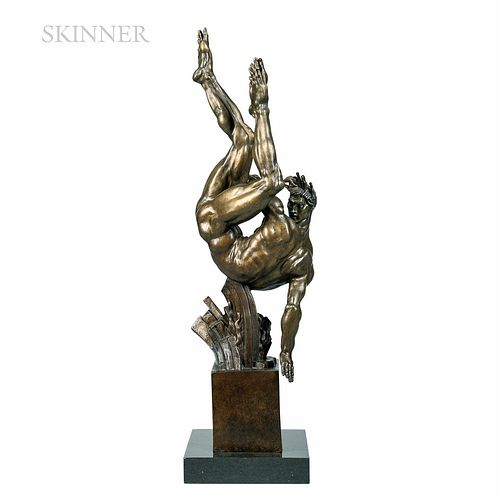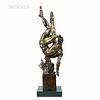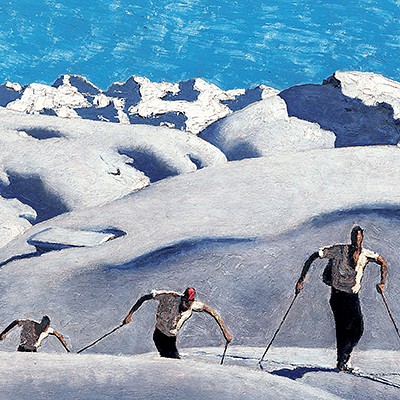Donald De Lue (American, 1897-1988) Phaeton II
Lot 351
About Seller
Bonhams Skinner
274 Cedar Hill Street
Marlborough, MA 01752
United States
Founded over four decades ago, Bonhams Skinner offers more than 60 auctions annually. Bonhams Skinner auctions reach an international audience and showcase the unique, rare, and beautiful in dozens of categories, including the fine and decorative arts, jewelry, modern design, musical instruments, sc...Read more
Categories
Estimate:
$10,000 - $15,000
Absentee vs Live bid
Two ways to bid:
- Leave a max absentee bid and the platform will bid on your behalf up to your maximum bid during the live auction.
- Bid live during the auction and your bids will be submitted real-time to the auctioneer.
Bid Increments
| Price | Bid Increment |
|---|---|
| $0 | $10 |
| $100 | $25 |
| $500 | $50 |
| $1,000 | $100 |
| $3,000 | $250 |
| $5,000 | $500 |
| $10,000 | $1,000 |
| $30,000 | $2,500 |
| $50,000 | $5,000 |
| $100,000 | $10,000 |
| $300,000 | $25,000 |
| $500,000 | $50,000 |
| $1,000,000 | $100,000 |
About Auction
By Bonhams Skinner
May 31, 2020
Set Reminder
2020-05-31 12:00:00
2020-05-31 12:00:00
America/New_York
Bidsquare
Bidsquare : Fine Paintings & Sculpture
https://www.bidsquare.com/auctions/skinner/fine-paintings-sculpture-5137
This auction covers a broad range of Western styles, media, and regions from the 16th century to the present day including paintings, sculpture, and works on paper Bonhams Skinner bidsquare@bonhamsskinner.com
This auction covers a broad range of Western styles, media, and regions from the 16th century to the present day including paintings, sculpture, and works on paper Bonhams Skinner bidsquare@bonhamsskinner.com
- Lot Description
Donald De Lue (American, 1897-1988)
Phaeton II
Signed, dated, numbered, and inscribed with Tallix foundry mark "D De Lue/SC 1972/© 1986/5/12..." in the lower edge of the bronze.
Bronze with gold/brown patina, height 27 5/8 in. (70.0 cm), on a polished stone plinth.
Condition: Minor dust and dirt to interstices.
N.B. In his book The Sculpture of Donald De Lue, Roger Howlett observed that Donald De Lue returned to the subject of Phaeton many times in his drawings and sculptures. De Lue was fascinated by the Classical myths of the striving of mortals, such as Icarus and Phaeton, to reach the heavens. The young Phaeton, child of the sun god Helios, begged to drive his father's chariot, but he was unable to control the horses, causing a wild and dangerous calamity as the chariot scorched the Earth. Zeus was forced to intervene and struck Phaeton with a thunderbolt to halt the carnage, plunging Phaeton to the ground. Through this dramatic subject, De Lue found the way to explore both the formal problems and the meaning of the figure falling through space. Phaeton I from 1960, which included Phaeton falling with one of the chariot's horses, won the Samuel F. B. Morse prize at the National Academy of Design's 142nd Annual Exhibition in 1967. In Phaeton II, De Lue focused on the single falling form of Phaeton, the figure conceived in strong contrapposto, designed to be seen in the round.
D. Roger Howlett, The Sculpture of Donald De Lue, Gods, Prophets, and Heros (Boston: David R Goding, 1990), pp. 123 and 191.
Estimate $10,000-15,000
Items may have wear and tear, imperfections, or the effects of aging. Any condition statement given, as a courtesy to a client, is only an opinion and should not be treated as a statement of fact. Skinner shall have no responsibility for any error or omission. - Shipping Info
-
Please visit http://www.skinnerinc.com/services/payment-and-shipping/ for information regarding the collection of items purchased at auction.
-
- Buyer's Premium



 EUR
EUR CAD
CAD AUD
AUD GBP
GBP MXN
MXN HKD
HKD CNY
CNY MYR
MYR SEK
SEK SGD
SGD CHF
CHF THB
THB












